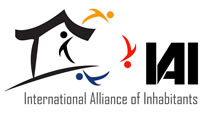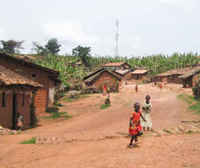Internal Displacement Global Overview of Trends and Developments in 2010
The Internal Displacement Monitoring Centre (IDMC) has released their global overview for 2010 . Since 1998 the Norwegian Refugee Council’s Internal Displace- ment Monitoring Centre has monitored internal displacement resulting from conflict and violence. During this period, the number of internally displaced persons has steadily risen from around 17 million to 27.5 million in 2010.
The conclusions are sobering, with a new rise in overall conflict-related internal displacement and the consolidation of a number of negative trends such as protracted displacement situations and displacement due to generalized violence (e.g. criminal activities as opposed to ordinary armed conflict).
Displacement continues to rise in the Americas, Asia, Eu- rope and the Middle East. But the good news is that this year’s Global Overview shows a steady decline in IDP numbers in Africa, dating back from 2004. This positive trend gives us hope. Indeed, the African continent remains at the forefront of policy development in support of IDP rights. In 2009, the African Union adopted the Kampala Convention – the first ever instrument for the protection and assistance of IDPs to bind countries across a whole continent. The Convention needs to be ratified by 15 African Union member states in order to enter into force, and we should all contribute to making that happen.
These positive developments aside, the exceedingly high number of IDPs globally is a reflection of perpetual conflicts and evolving patterns of armed violence which, when taken together, produce ever more displacement. Sadly, once people have been displaced by conflict and violence, the majority of them remain locked in situations of protracted displacement, often with limited prospects of rebuilding their lives or finding durable solutions.
The Global Overview outlines the particular challenges faced by internally displaced people trapped in situations of chronic conflict and violence, such as in Somalia, Yemen, Afghanistan, and Colombia. In these highly complex securityenvironments, persons in displacement not only risk their lives in the midst of armed violence, but also struggle to meet their basic needs and access their human rights.
An important shift in the nature of contemporary conflict is that criminal armed violence is growing exponentially, and more people are killed each year as a result of generalised armed violence than in traditional armed conflicts. This, com- bined with a strong trend of urban displacement, means that governments and humanitarian actors alike need to develop innovative approaches to protecting IDPs.
In the international community, there is often minimal focus on IDPs beyond the acute humanitarian emergency. Protracted displacement situations, in places such as India, Colombia, Kenya, Iraq, Turkey, and the Balkan countries, require sustai- ned commitment and engagement by governments to respond to the needs and risks faced by IDPs. Only through effective government action can responses be devised that provide ef- fective, long term protection of IDPs, which ultimately need to enable IDPs to reach the durable solution of their own choice. In a majority of cases, governments lack the capacity, resources – and sometimes the will – to enable such choices to be made. Consistent support is therefore required to assist governments in meeting their responsibilities towards their own internally displaced populations.
Commentaires
%login_link_starAuthentifiez vous ou créez un nouveau compte utilisateur pour commenter.

